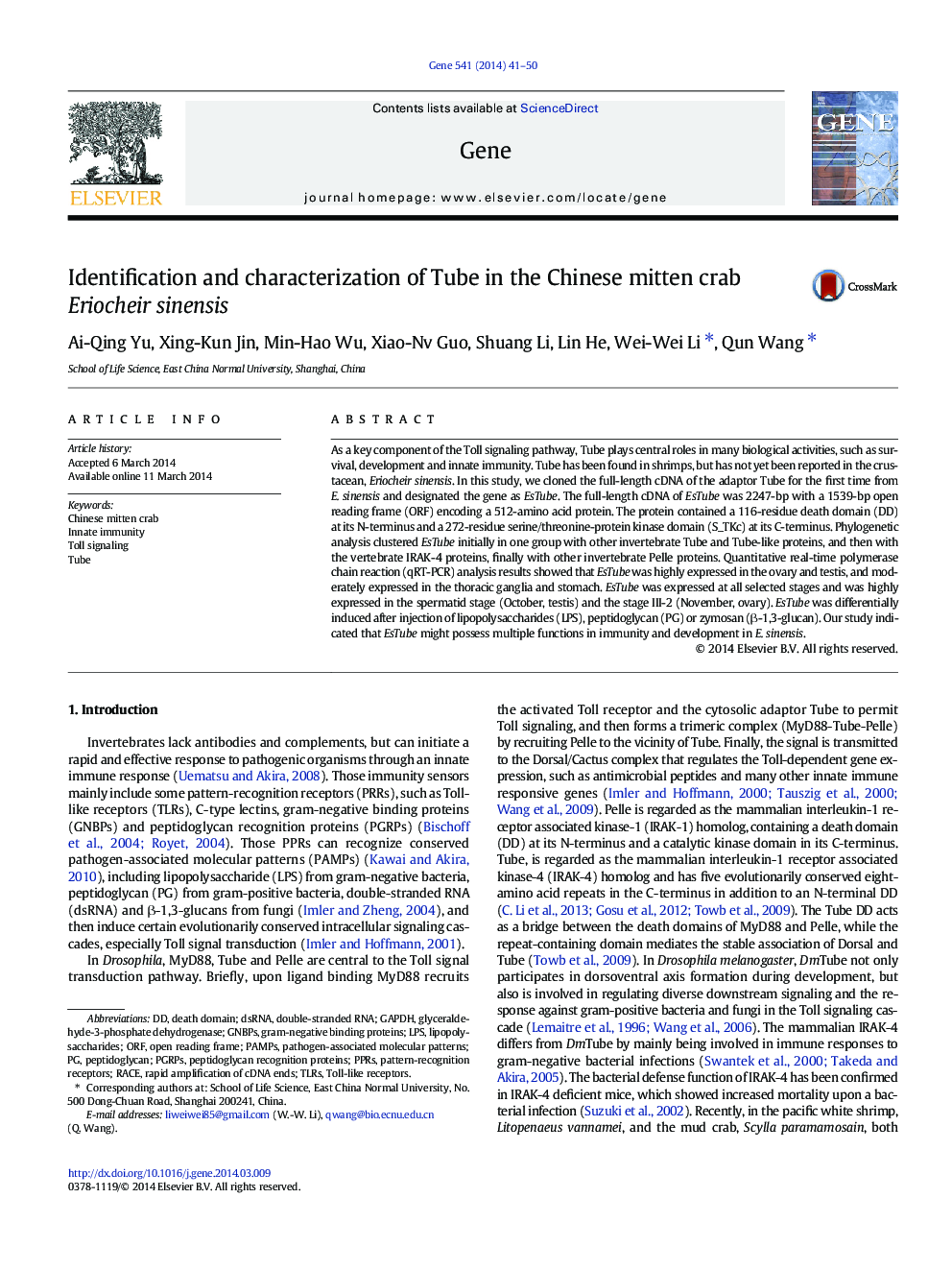| Article ID | Journal | Published Year | Pages | File Type |
|---|---|---|---|---|
| 2816390 | Gene | 2014 | 10 Pages |
•EsTube was cloned and characterized.•EsTube was highly expressed in the ovary and testis.•EsTube expression in crab hemocytes varied after PAMP stimulation.•EsTube expression in crab hepatopancreas varied after PAMP stimulation.•EsTube may possess the multiple functions of immunity and development.
As a key component of the Toll signaling pathway, Tube plays central roles in many biological activities, such as survival, development and innate immunity. Tube has been found in shrimps, but has not yet been reported in the crustacean, Eriocheir sinensis. In this study, we cloned the full-length cDNA of the adaptor Tube for the first time from E. sinensis and designated the gene as EsTube. The full-length cDNA of EsTube was 2247-bp with a 1539-bp open reading frame (ORF) encoding a 512-amino acid protein. The protein contained a 116-residue death domain (DD) at its N-terminus and a 272-residue serine/threonine-protein kinase domain (S_TKc) at its C-terminus. Phylogenetic analysis clustered EsTube initially in one group with other invertebrate Tube and Tube-like proteins, and then with the vertebrate IRAK-4 proteins, finally with other invertebrate Pelle proteins. Quantitative real-time polymerase chain reaction (qRT-PCR) analysis results showed that EsTube was highly expressed in the ovary and testis, and moderately expressed in the thoracic ganglia and stomach. EsTube was expressed at all selected stages and was highly expressed in the spermatid stage (October, testis) and the stage III-2 (November, ovary). EsTube was differentially induced after injection of lipopolysaccharides (LPS), peptidoglycan (PG) or zymosan (β-1,3-glucan). Our study indicated that EsTube might possess multiple functions in immunity and development in E. sinensis.
